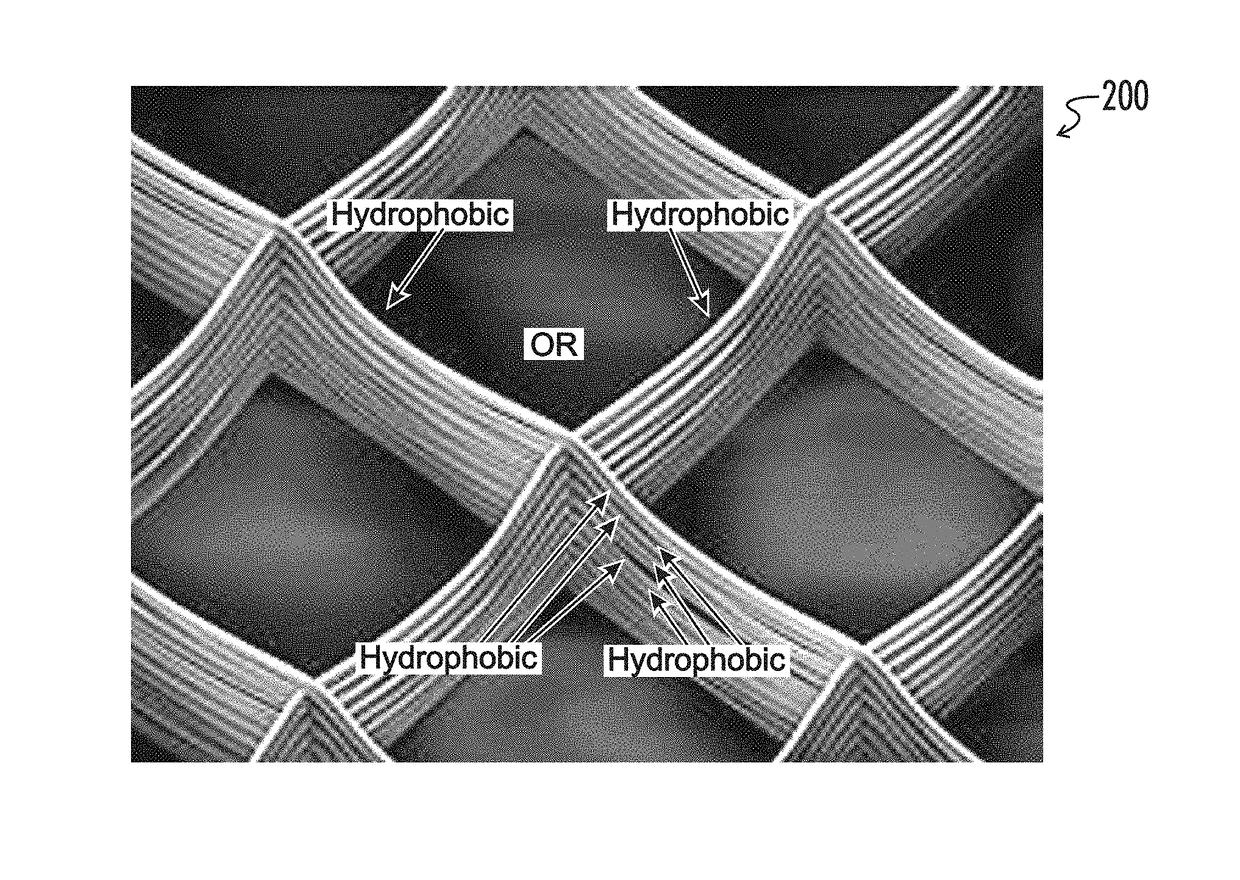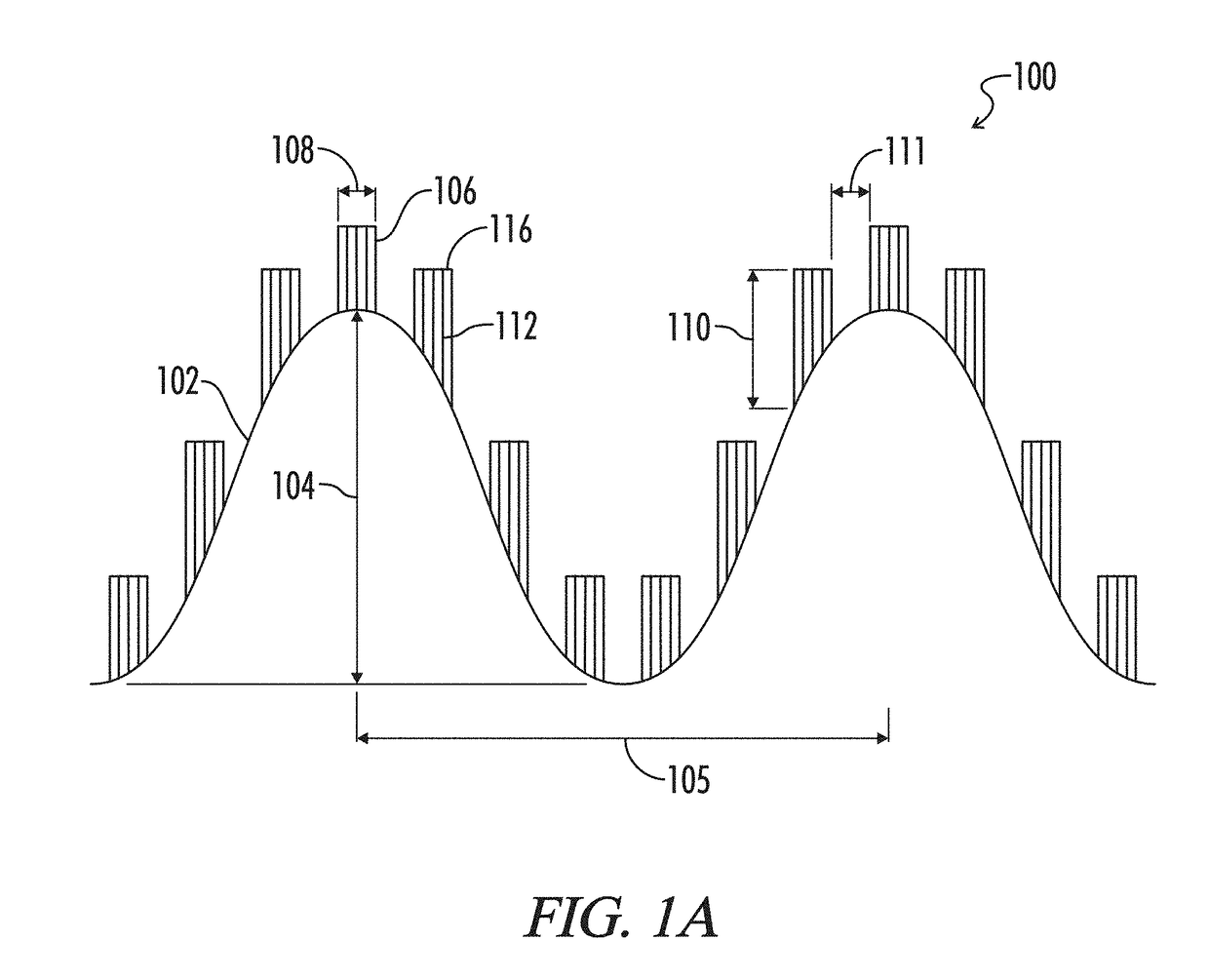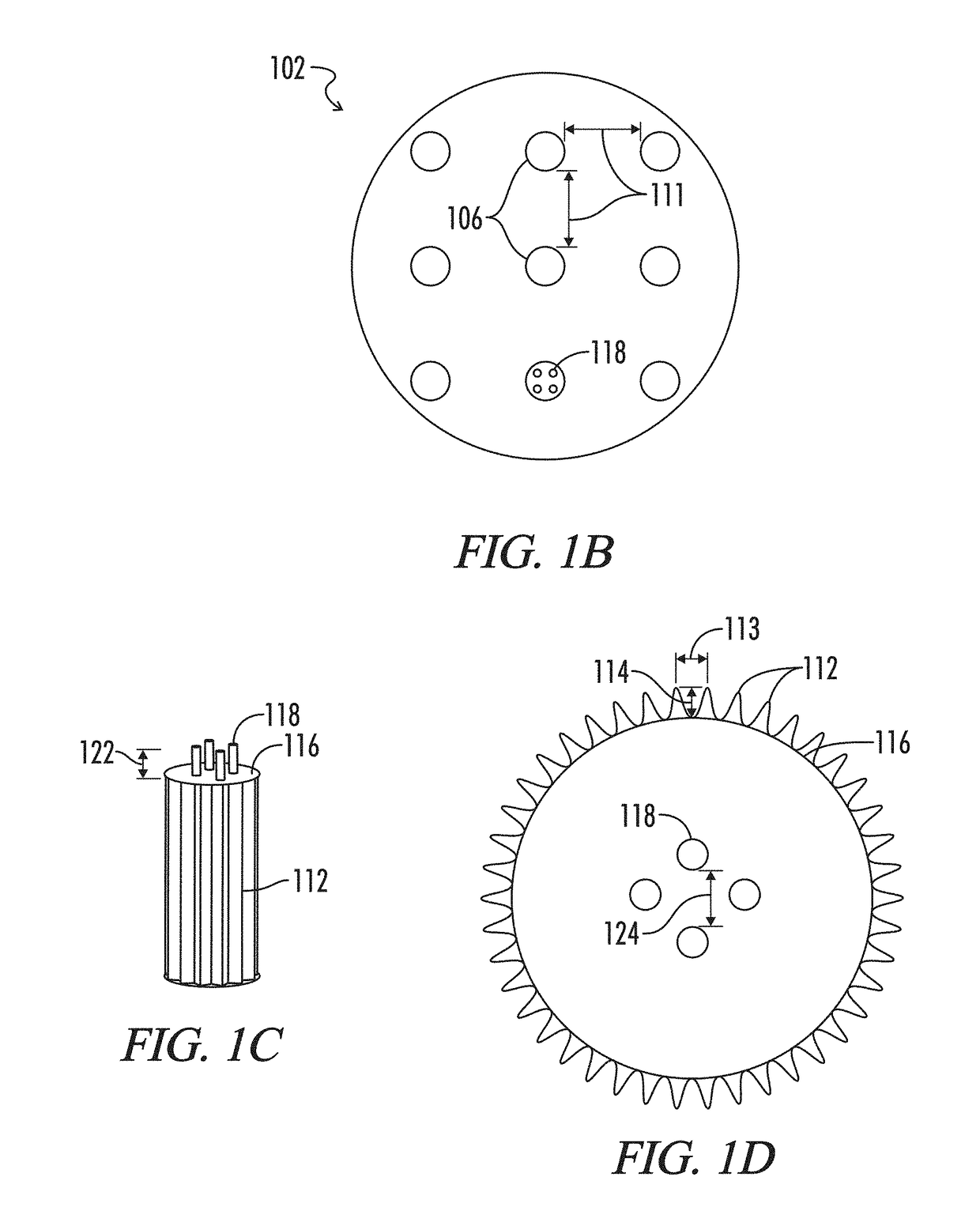Microstructured haptotaxic implant
- Summary
- Abstract
- Description
- Claims
- Application Information
AI Technical Summary
Benefits of technology
Problems solved by technology
Method used
Image
Examples
example 1
[0139]Polymers suitable for constructing patterned biomaterials of the present disclosure are preferably absorbable in situ. Polyesterurethanes are polyurethanes copolymerized with a lactide diol. Lactide diol was prepared using the following materials: 1,6-Hexanediol (Acros), Toluene (Acros) D,L-Lactide (SAFC), L,L-Lactide (Aldrich), Tin-ethylhexanoate (Sigma Aldrich), Chloroform (Sigma Aldrich), Diethylether (Sussmann)
[0140]This procedure is to be performed in closed vessels purged continuously with cryogenically distilled (dry) argon or nitrogen.
[0141]30 grams of 1,6-hexanediol is to be placed in 600 ml of toluene in a graduated 2 Liter flat bottom flask equipped with a magnetic stir rod. The flask is to be capped with a 2-hole stopper, one hole equipped with an input conduit and the other hole equipped with an output conduit connected to an oil trap (to prevent back flow of water vapor). The input conduit is to be connected to the nitrogen source and nitrogen flowed at ap...
example 2
Bioactive
[0161]All of the synthesis that is detailed below are to be performed in a hermetically sealed glass reactor equipped with a stir rod and temperature controlled jacket. The head space of the reactor is to be continuously flushed with dry nitrogen unless otherwise specified.
example 2a
Preparation of a Polyester Diisocyanate
[0162]In this example a castor-derived hydroxyl-terminated ricinoleate derivative is used as the diol. One equivalent of polycin D-265 (212 g) is combined with 2 equivalent of toluene diisocyanate (174 g) at room temperature (22° C.). The mixture is stirred at 100 revolutions per minute and the temperature monitored. The mixture will begin to heat up by exothermic reaction and no heat is to be applied to the reactor until the temperature in the reactor ceases to rise. Then the mixture temperature should be increased in 5° C. increments per ½ hour until the mixture reaches 60° C. The reaction should be continued until the % NCO=10.9% . The target % NCO is reached when every hydroxyl group in the mixture is reacted with an NCO group. Ideally, the result is a single diol endcapped with two diisocyanates. This outcome can be enhanced by slow addition of the diol to the diisocyanate. The addition should be in 10 g increments, added when the exotherm...
PUM
 Login to View More
Login to View More Abstract
Description
Claims
Application Information
 Login to View More
Login to View More - R&D
- Intellectual Property
- Life Sciences
- Materials
- Tech Scout
- Unparalleled Data Quality
- Higher Quality Content
- 60% Fewer Hallucinations
Browse by: Latest US Patents, China's latest patents, Technical Efficacy Thesaurus, Application Domain, Technology Topic, Popular Technical Reports.
© 2025 PatSnap. All rights reserved.Legal|Privacy policy|Modern Slavery Act Transparency Statement|Sitemap|About US| Contact US: help@patsnap.com



